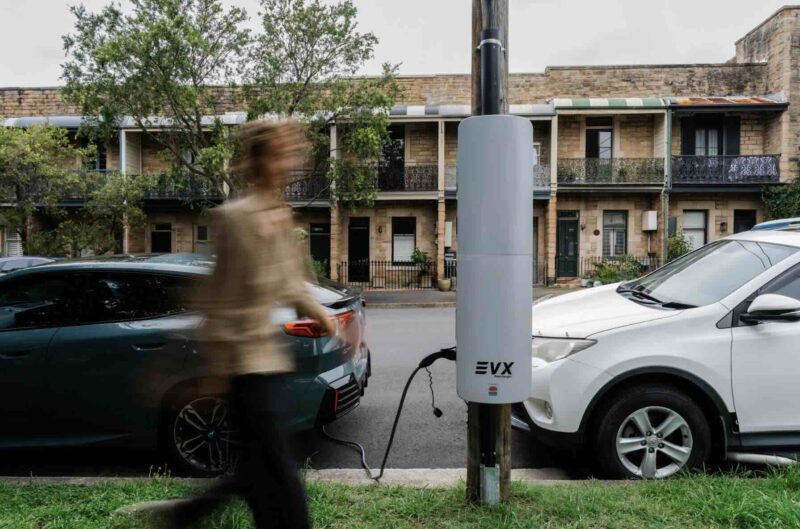The Albanese Government has committed $2.4 million to install new kerbside EV charging infrastructure around Australia to meet rising consumer demand, with one in three drivers considering an EV in the next five years.
The new commitment, in partnership with EVX Australia, will see 250 kerbside chargers with 500 charge plugs installed in the next two and a half years in New South Wales, Victoria, and South Australia.
The project, backed by funding from the Australian Renewable Energy Agency (ARENA), will use existing power lines to limit disruption and reduce costs.
The targeted locations are a mix of urban hubs and regional centres like Orange, Wagga Wagga, Bellingen and Goulburn.
“These chargers are a key step to unlocking cleaner, cheaper-to-run EVs for Australians who aren’t able to charge them at home,” said Minister for Climate Change and Energy Chris Bowen.
“When we came to government, one in 50 cars was an EV. That’s now one in ten, and we’ve tripled the number of fast chargers across Australia.
“But we need a mix of solutions – not just fast chargers, but more convenient kerbside options in our cities and towns.”
ARENA CEO Darren Miller said kerbside charging was a major limiting factor for EV uptake, noting that many Australians lack home charging infrastructure.
“This initiative will make EV charging more accessible for both residents and visitors, while allowing us to refine the rollout process for future expansion,” Miller said.
The project is part of the government’s Driving the Nation program, which has already boosted the number of fast-charging stations nationwide from 356 to more than 1,100, with more than 3,500 plugs now available.
EVX will partner with the University of Technology Sydney (UTS) to coordinate real-time reporting, and will work with Ausgrid and Essential Energy on flexible tariff structures.
The company will also partner with EV charging app Wevolt to develop an open-access interface between utility systems and the public EV charging network to improve customer experience.
This latest step is part of a suite of changes the Albanese Government has introduced to promote the uptake of EVs on Australian roads, including tripling the number of fast chargers on the road since 2022, and introducing the New Vehicle Efficiency Standard (NVES), which came into effect on January 1st.
The NVES sets emissions limits for new vehicles sold by manufacturers, and those limits will get stricter over time. If a manufacturer exceeds the emissions cap they will face financial penalties.
Under the scheme, car companies that sell low or zero-emissions cars can also offset the emissions of higher-emitting vehicles against them.
According to Climate Council, the new scheme should prevent 20 million tonnes of carbon emissions by 2030.
The number of EV models available in Australia has dramatically increased in the last five years thanks to greater market competition as brands like BYD and MG introduce lower-cost models.
In 2020, Australian customers had access to just 28 EV models. By 2024, that number had risen to 122, and with sales that year making up a whopping 10% of the vehicle market, as noted by Minister Bowen.
Despite soaring uptake in Australia, the growth of EV sales actually slowed in 2024. While in 2023, EV sales increased by 161% on the previous year, 2024’s sales were up a modest 4.7% from the previous year.
That slowdown is likely in part to be a natural consequence of market saturation as early adopters have already made their purchases, particularly under the new measures introduced after the Government came to power in May 2022.
2023 was also a bumper year for EVs thanks to a storm of factors including the stabilization of global supply-chain woes after COVID, and the arrival of several new lower-cost models to the market.


